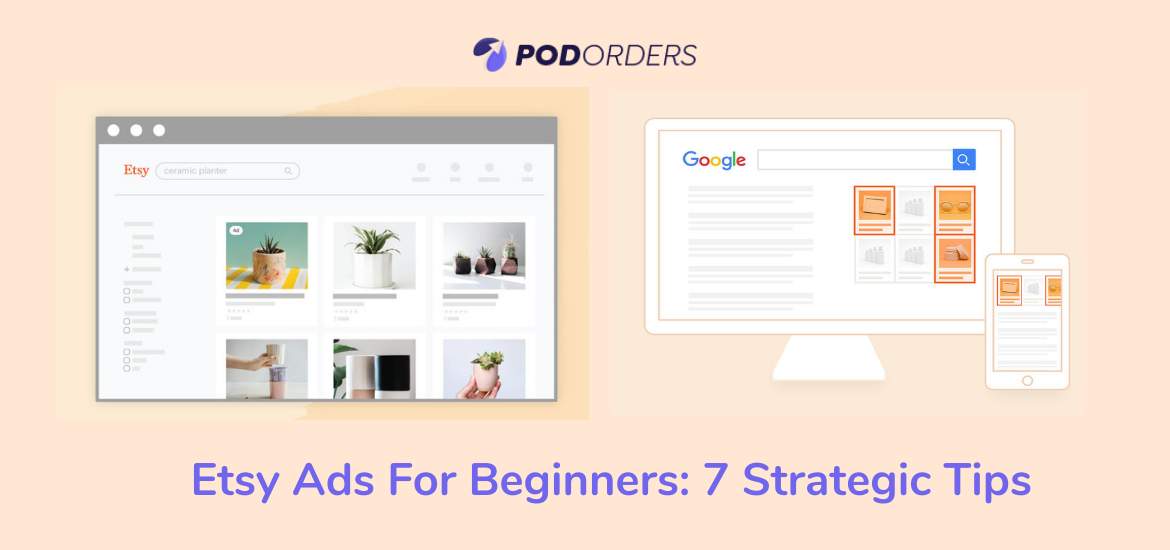Etsy ads seem intimidating to many sellers, but they’re not as complicated as you might think. In fact, once you’ve spent some time getting to know them, they can actually be quite helpful in driving sales and making your Etsy shop more visible to potential customers.
If you’re looking to get started with Etsy ads, this guide for Etsy ads for beginners will help you decide whether or not advertising on Etsy makes sense for your business, as well as how to set up and manage your campaigns successfully.
1. Why your business needs to run Etsy Ads?
Etsy, an online marketplace filled with handcrafted and vintage items, has been growing rapidly over the last few years, surpassing 81.9 million active buyers in 2021 alone. Over 50 million people visit Etsy every month, making it a great platform for promoting your brand and products.
If you’re considering advertising on Etsy, there are several reasons why you should do so. Here are three of them:
1.1 Improve High brand awareness
Almost everyone knows about Etsy even if they’ve never shopped there or even purchased from an Etsy seller. As a result, if you advertise your business on Etsy, it’s likely that many potential customers will already be familiar with your brand before they ever come across it in search results.
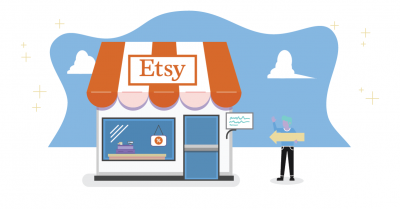
1.2 Get Lower cost per click
One of the biggest advantages of advertising on Etsy is that click costs are generally lower than most other advertising platforms including Google AdWords and Facebook ads.
As an advertising platform, you don’t need to spend a lot of money in order to get significant results from your campaigns. In fact, most sellers can expect a return on investment within one month of launching their campaign.
1.3 Less competitive environment
A study by the Journal of Business Research found that Etsy sellers who advertise on Etsy receive more click-through rates and higher conversion rates than those who advertise off of Etsy. Fewer advertisers mean less competition, which ultimately equates to better advertising results.
2. How do Etsy ads work?
Before you learn how to manage Etsy ads for beginners, it’s a good idea to understand how Etsy ads work.
The first thing you need to know is that your ad will be hosted on Etsy’s website, so customers will see your ad in searches that look like an ordinary search engine results page (SERP). Your Etsy ad will appear at or near the top of its category if it has enough impressions and clicks. If it doesn’t meet these criteria, then it won’t appear at all.
Etsy ads work by featuring your products to people who are on Etsy but are not visiting your shop. If a shopper sees your product and clicks through to purchase it, you pay a small percentage of that sale price (cost-per-click or CPC) in order to get it. This model is very similar to Google AdWords and Facebook Ads. The exact cost will depend on things like how much you’re paying per click and where you place your ads.
3. Etsy advertising fees
Etsy comes with two distinctive types of ads, including Etsy Ads and Offsite Ads. The cost of advertising on Etsy depends on what type of campaign you’re running, but it’s usually very affordable. It’s important that you have a good understanding of these fees before starting out so that you can set a realistic budget and allocate your money accordingly.
There are two ways you can pay for Etsy ads:
- Cost per click (CPC) – where you only pay when someone clicks on your ad.
- Cost per impression (CPM) – where you only pay when someone sees your ad.
CPM is most often used in brand campaigns or for broad, product category ads. Engagement campaigns allow you to choose a number of people that need to engage with your ad, like visit a landing page or add a listing in addition to simply clicking on it. The more engagements you require before paying, the lower your cost-per-engagement will be.
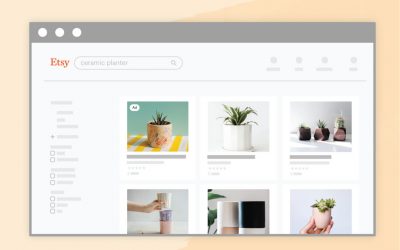
Like all ad networks, Etsy charges a small fee every time an item is sold through one of its advertising channels. In 2017, these fees ranged from 6% on direct-sold items to 20% on sold via external advertising. For example, if you list an item for $10 and sell it directly yourself, through your shop, or by posting it in someone else’s shop, you pay nothing extra beyond your base listing fee.
However, if that same item sells via Etsy’s system (for example, using Promoted Listings), Etsy takes a commission of 6%. So you’d end up receiving only $9 per sale rather than $10 per sale.
4. How to set up Etsy ads for beginners?
Below are the step-by-step instructions to set up Etsy ads for beginners.
4.1 Step 1: Click on Shop Manager
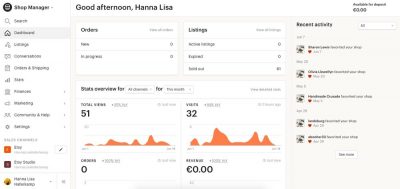
4.2 Step 2: Click on Marketing
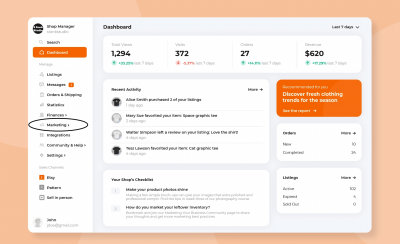
4.3 Step 3: Click on Promoted Listing
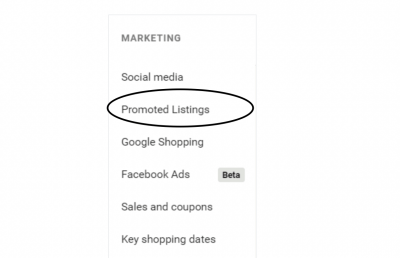
4.4 Step 4: Set your daily budget
The minimum daily budget is $1.00 by default. You can change your budget at any time you want.
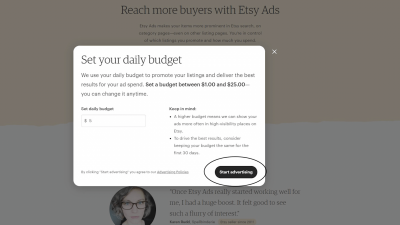
4.5 Step 5: Click Start Advertising
To this point, your Etsy ad is up and running. Follow the below tips about Etsy ads for beginners to enhance them to the next level.
5. Tips to take Etsy ads for beginners to the high level
Running Etsy ads for beginners might be challenging. However, it is not impossible to deal with.
5.1 SEO Optimization
SEO is key (Use longtail tags/ keywords,..)
When you are creating your Etsy ads campaign, make sure that you put a focus on SEO. Try also using longtail keywords (as much as possible). Longtail keywords are simply tags/words that people search when they have a more specific or less general question in mind.
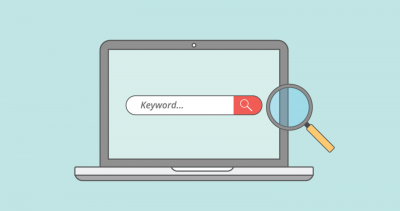
This makes your product more attractive to users who are really looking for what you’re selling. That increases your chances of them clicking through, buying, etc. Also, it will increase your click-through rate by a large amount which is very important because CTR is one of your main KPIs in Etsy ads. The longer the tag/keyword, the more competitive you are at searching by that.
5.2 Frequently Measure and adjust your spending
While most of your Etsy ads time will be spent looking at your auctions and searching for ways to improve them, don’t forget about your advertising budget. Keep a close eye on it and make adjustments based on how you’re doing.
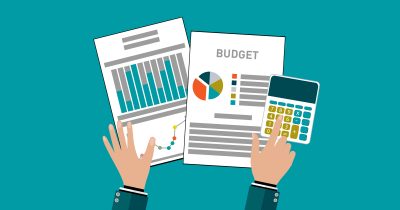
If one type of product isn’t getting enough clicks, you can decrease its CPC. If it’s not converting well enough (not giving you a high enough ROI), you can increase it. The more data you have about what works, what doesn’t work, and why, the better able you’ll be able to refine your targeting and messaging. And track whether or not they’re effective as time goes on.
5.3 Use high-quality photos
Etsy has two types of promoted listings: text ads and product galleries. Text ads don’t have photos or other visuals, so you have more freedom in how you use them and where they appear on your page. Product galleries are used to promote specific products. They show images and allow visitors to click through directly to your item listings. This makes them more expensive than text ads, but they also produce higher conversion rates as long as you include high-quality images.
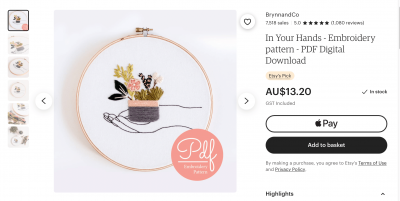
Etsy allows you to include up to 8 pictures with your ad. Make sure these pictures are attractive, relevant and illustrate what you’re offering as clearly as possible. Be mindful of file size, too: Etsy recommends keeping images no larger than 4MB each. This will help prevent slow load times and ensure a good user experience. Users will have a better chance of interacting with your ad if it doesn’t take forever to display!
5.4 Understand your ad performance and optimize
When it comes to Etsy ads for beginners, you don’t have much time to make an impression. Once your campaign is live, it needs constant monitoring and optimizing. So, don’t sit back!
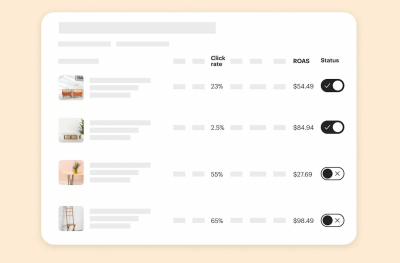
From day one, you want your ads to be well received by Etsy shoppers. Ad viewers will spend only eight seconds with your listing before making a judgment call about whether or not they want to click and buy. That’s why it’s important that you monitor ad performance closely as you go. If people are generally clicking on your ad but aren’t converting, look at how your product description stacks up against other listings in your category (or search results).
5.5 Learn from your competitors
Market research is often performed on businesses that have an established marketing strategy. Paying attention to your competitors’ ads can help you identify successful strategies that you can incorporate into your own ad campaigns. If a competitor has a strong ad, figure out why it’s working, and try adapting it so it speaks directly to your target audience.

If they aren’t achieving positive results with their ads, learn from their mistakes so you don’t replicate them! Plus, if you’re unable to come up with a relevant idea of your own, chances are a good competitor ad will work just as well, maybe even better! In any case, there’s no need to reinvent the wheel here, just copy what works.
5.6 Use split A/B testing
Split testing, testing different ad variations simultaneously, gives you real-time insight into which ads are resonating with your audience. This helps eliminate errors and makes it easier to track what works and what doesn’t. It is incredibly useful when you’re trying to optimize your Etsy ads, and can be used in many ways: split testing different images, phrases, or headlines that can give you instant feedback.
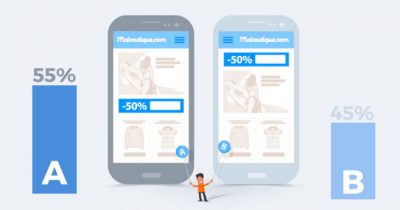
All it takes is a few clicks and then you can quickly see what performs best. Split testing gives you valuable data so that over time, as you run more ads, they continue to perform well.
For example, if you want to test two headlines, split test them by 50/50 in your campaign. One ad will have headline #1 and one will have headline #2. The winner will then become your new control headline.
5.7 Promote seasonal listing
If you want your product to sell during a specific season, make sure you create a seasonal listing. This gives buyers an idea of when they can expect that specific item. It also helps convince them that it’s worth buying from you now because they know when they will receive it. If your winter products aren’t relevant or selling well in summer, get rid of them!
Listings are like online ads. The older and less relevant they are, the lower their performance. To avoid ending up with irrelevant listings cluttering up your shop and wasting money on pay-per-click ads, consider changing your listed dates every season or two.
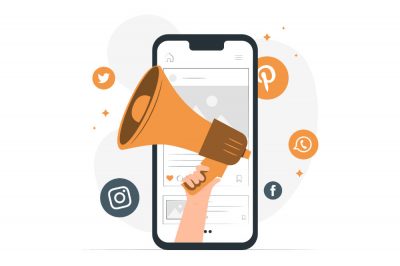
Moreover, promote your seasonal items in advance. Etsy ads come with a couple of free days of promotion per month, so use these wisely. If you’re running an ad about summer items (such as swimsuits), start promoting it in April and early May. This will give people time to get excited about what’s coming and have plenty of time left over for shopping before summer arrives.
6. Etsy ads for beginners FAQs
Let’s seek some answers to frequently asked questions regarding Etsy ads for beginners.
6.1 How much should I spend on Etsy ads?
There’s no right or wrong answer here because it depends on your business goals, resources, and more. But in general, you want to set your budget so that you are profitable with your sales and traffic while not spending too much money or wasting time as an inexperienced seller.
Basically, it’s a good idea to spend money on Etsy ads in accordance with how much you earn from your sales. If you’re earning $10 per item sold, it might not be worth spending $5 on an ad campaign. If you’re selling 100 items a month and your profit is $10 per item, that could be different.
You might decide that a well-targeted ad campaign is worth allocating 10% of those earnings. We usually recommend starting small and seeing what kind of return it brings first. If you have other marketing options (like sales through your own shop), we like combining them with Etsy ads.
6.2 Are my keywords holding me back or my Etsy Ads budget?
Both of these things can hold you back, but it’s important to know where you should really be looking. If people aren’t clicking on your ad, there is a good chance that they aren’t relevant to what you’re selling.
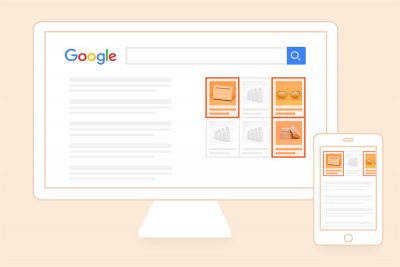
Likewise, if you have a small budget, then few will even see your ad in their feed. Both of these things can be changed by doing more research on topics such as keywords and going into your Etsy account settings to change up your budgeting options.
6.3 How long does it take for Etsy ads to work?
It really depends on your business and industry, and there are no set rules for how long it takes Etsy ads to be profitable. Some sellers see a return in just one day, while others take weeks or months. Our advice is simple: as long as you’re tracking your results closely with reliable analytics software like Google Analytics, then don’t panic if it takes longer than you expect. Giving Etsy ads time and consistent effort will generally pay off over time!
What’s more, it takes time (and some trial and error) to build up your network of potential customers on Etsy. However, once you have an active audience on Etsy, it’s easy for them to discover and buy from you again in the future.
More FAQs in terms of Etsy ads for beginners can be found here.
7. Wrapping Up
Etsy ads are one of the best ways to reach more customers if you’re selling on Etsy. They can help you succeed even if you’re just starting out with your first listings. Hopefully, this ‘Etsy ads for beginners’ guide has walked you through everything you need to know so that you can start getting results with your ad campaigns right away!
Read more
